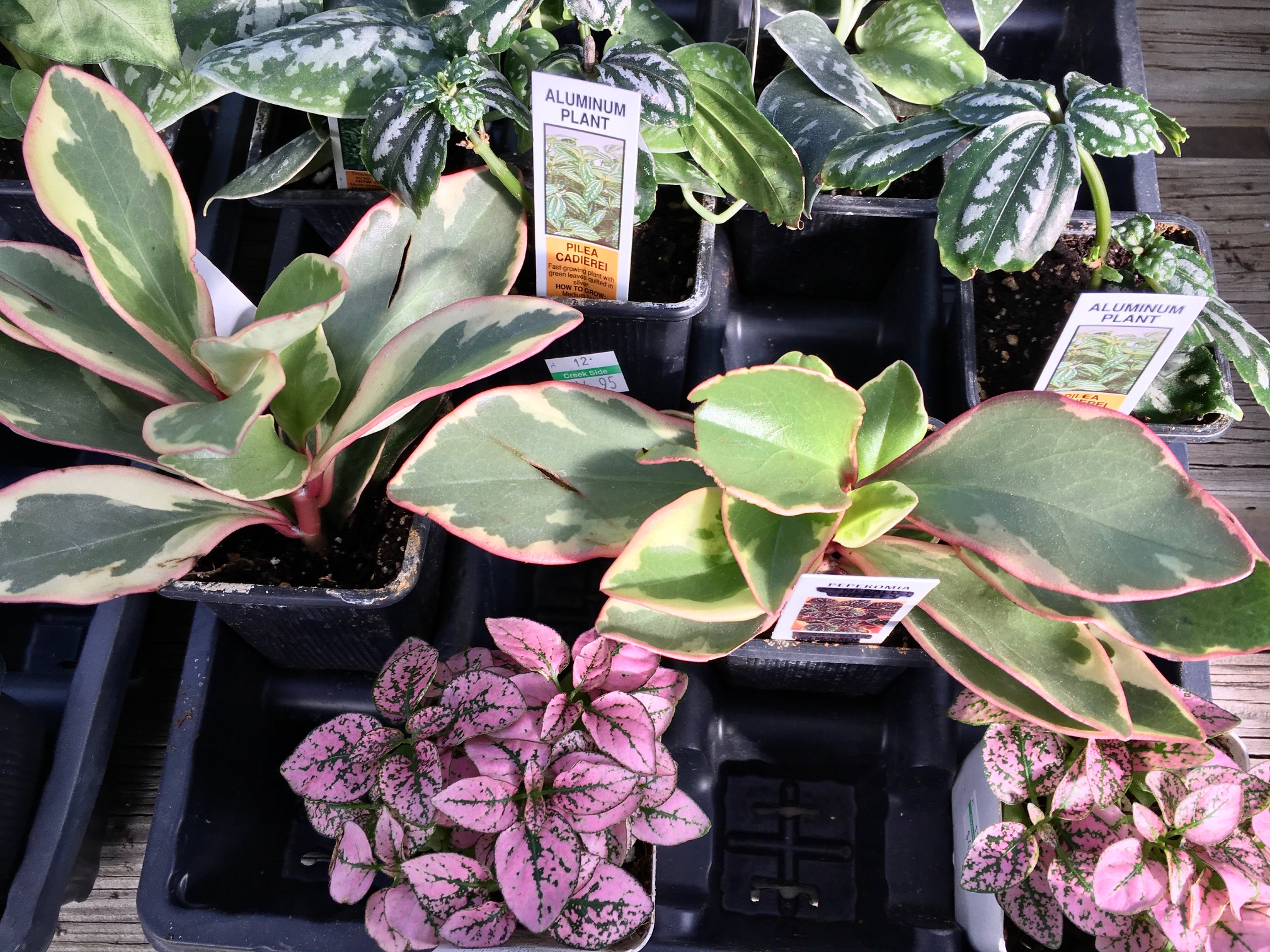These terrarium plants are best suited for the small, confined humid environment that is unique to a closed-in terrarium. You can make incredible displays using a wide variety of different containers—many of which you may already have at home. Choosing the right terrarium plants makes it easy to enjoy these spectacular houseplants without fussing over their care.
Terrariums are a fun way to bring something different to typical houseplant displays. They are also incredibly easy to care for, provided you use the right plants to begin with.
Terrarium Containers to Try
Choosing your terrarium containers will have a huge impact on how the final project looks. You can easily find suitable containers at your favorite gardening store, or even a thrift store.
Just make sure to choose a glass container that has airflow—airtight containers will suffocate your plant. Here are a few of my favorite terrarium containers:
The Best Terrarium Plants
There is an endless amount of terrarium plants to choose from. Put together some of varying sizes, colors, and textures. Use a combination of plants that they look pleasing when planted in combination with one another. If something does not work out, try something else. Nothing must be permanent
Fittonia
Fittonia likes humid environments and low light, so these plants are perfect to brighten up a dark corner of the house or even the bathroom. Plus, their vibrant pink, white, or red-veined leaves will add a pop of color wherever they are displayed. These plants tend to grow well with soil that can retain moisture but also drain well.
Peperomia
This houseplant grows well in both low light and bright conditions. These plants prefer their soil more dry than wet, so you do not need to over water.
If you have had a hard time growing indoor plants in the past, give this one a try. It does not need much attention at all and is a slow grower, so it is the perfect plant to plunk into a terrarium and not have to think twice about it. Plus, its variegated leaves are striking with bright white stripes which will add interest and contrast nicely with other plants in your terrarium.
Creeping Fig
Creeping fig, with its small, variegated heart-shaped leaves, makes a lovely addition to almost any terrarium. It is a perennial climbing vine, so you can train it to creep up structures, which could be interesting to try in a large terrarium. You can easily propagate creeping fig by rooting a branch-cutting in water
Pilea
Friendship plants come in many different varieties, most of which thrive and look beautiful in terrariums. Some species have bright colors, interesting variegation, and saw-tooth leaves, while others are bright green with small, very round leaves, so there is a lot to choose from in terms of aesthetics.
There are also creeping varieties which work well in terrariums as they will crawl and spill over the edges. These plants do well in either indirect sunlight or shade. Keep the soil relatively dry—you’ll be able to see the leaves slightly droop when more water is required.
Polka-Dot Plants
Polks-Dot plants seem to have a great sense of humor. This plant is cheerful and comes in pink, red, and silver varieties. Easy to care for, it might need to be pinched back if it gets too tall or starts to get spindly or leggy.
Baby Tears
Baby tears is a small plant with a lot of common names. Baby’s tears can be somewhat invasive, taking over whole gardens. In a terrarium, it will behave itself quite well and is a lovely, low-growing plant if the soil has an opportunity to dry out in between waterings. Too much water and Baby Tears will not be happy.
Tillandsia
Tillandsia is a great choice for terrariums of all kinds as they don’t even need soil to grow. They come in a lot of different shapes, sizes, and colors and are easy to care for if you know how.
To keep these plants properly watered, remove the air plant from the terrarium completely. Then, allow it to take a nice soak in a bowl full of water for an hour or so before returning it home. Do this about once every month.

